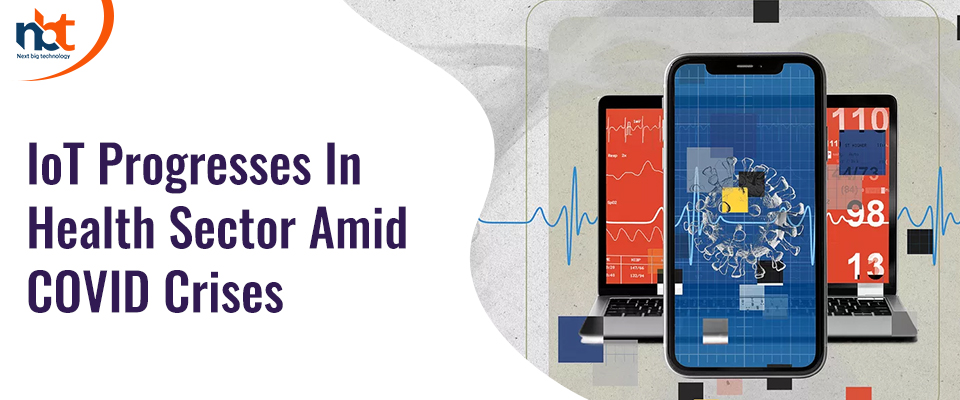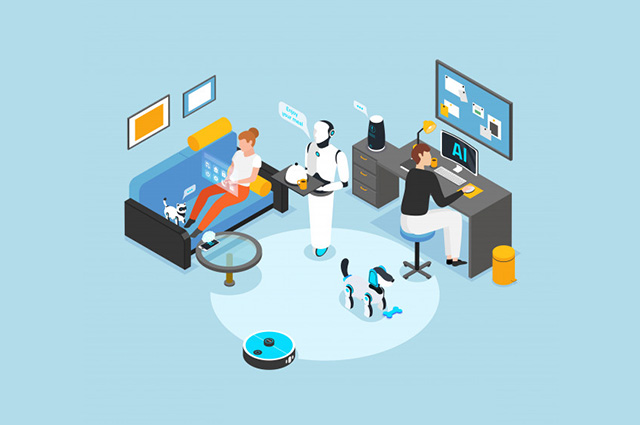Countries around the world pool all resources, implement state-of-the-art technology to mitigate the impact of COVID-19 and inform the at-risk people. Technologies such as AI and IoT are essential in this scenario. These technologies help track the spread of the virus, identify high-risk patients, predict mortality, and monitor infections in real-time.
It also minimizes the need for human physical interaction and prevents the spread of the virus while allowing patients to recover more quickly. In these unprecedented times, healthcare technology has strived to innovate faster!
Use of IoT
Today’s state-of-the-art IoT products can play an important role in limiting the spread of viruses and helping treat infected people. With non-contact assistance, hygiene compliance, and temperature monitoring all in one place in real-time. These products also help collect useful data during use in offices, warehouses, hospitals, and more.
Also, products based on facial recognition, such as contactless pill dispensing and contactless heart rate measurement, will benefit hospitals.
- Monitoring of coronavirus pandemics
A Massachusetts Institute of Technology (MIT) study shows that overlaying Geographic Information Systems (GIS) on mobile IoT data can help epidemiologists identify who has been infected. Technology can also help monitor high-risk patients and provide healthcare professionals with useful data.
- Connected thermometer
Hospitals use a connected thermometer to monitor temperature and report differences in real-time. These devices send and receive real-time patient data from sensors and send it to a nursing station for continuous monitoring with IoT, access controllers.
The data collected from more than one million connected thermometers are used to generate daily maps showing which counties in the United States are experiencing increased high heat. In India, a team of product experts has designed a non-contact thermal detection system. This system uses artificial intelligence-based infrared images to remotely read the skin temperature of an individual passing through the range of the camera.
Use of AI
AI is demonstrating its capabilities by diagnosing risks and helping medical advances to address pandemics. In today’s domain, AI is used for timely notifications, dashboards, social monitoring, medical diagnostics, and treatment.
- Hospital visitor and patient monitoring using AI
Hospitals around the world are implementing AI to support health professionals. They are treating infected patients and effectively monitoring and managing coronavirus pandemics. Some AI-powered solutions, such as in-camera face scanners, examine hospital visitors and analyze facial attributes and thermal scanners to determine the visitor’s fever status. All of these solutions have been widely adopted and have treated thousands of infected patients at unprecedented rates.
- Remote monitoring
Another powerful form of artificial intelligence technology is remote surveillance. This is facilitated by health care facilities to protect the workforce and monitor patients closely in hospital dormitories. In some cases, this sensor technology, when placed under the patient’s mattress, can analyze the patient’s heart rate. It can also analyze breathing rate and body movements under observation while caring for high-priority COVID patients.
- COVID voice detector
To understand, predict, and detect people infected with COVID-19, tech researchers implement artificial intelligence tools to breathe, cough, and speak.
These efforts are currently in the early stages of data collection by researchers-voice and cough recordings and information to identify infected individuals. After sending data to AI algorithms, especially machine learning and deep learning programmers, determine and predict results.
Thanks for reading our post “Role of AI and IoT technologies in COVID crises”, please connect with us for any further inquiry. We are Next Big Technology, a leading web & Mobile Application Development Company. We build high-quality applications to full fill all your business needs.













